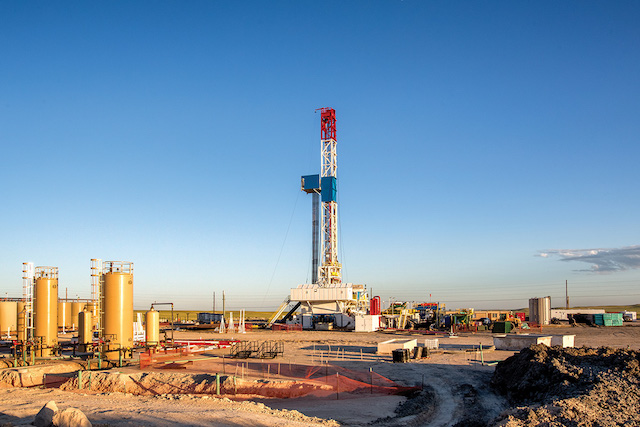Between 2005 and 2015, U.S. natural gas production rose 50 percent due to the growing use of hydraulic fracturing (fracking) to extract natural gas from shale. The added production caused natural gas prices to fall by roughly 50 percent. As I have noted previously (Benjamin 2013), we have likely enjoyed environmental benefits from this fracking revolution, chiefly due to less air pollution and reduced greenhouse gas emissions. New research by Catherine Hausman and Ryan Kellogg (2015) paints a compelling picture that the more conventional economic benefits of fracking are even greater: Lower heating, cooling, and manufacturing costs have raised the wealth of American consumers.
In the 1990s, George Mitchell combined horizontal drilling with hydraulic fracturing to commercially (which is to say, profitably) extract natural gas from underground shale formations that were long thought to be uneconomical. By 2005, his methods had been sufficiently improved and adopted that natural gas production in the United States began to rise sharply. This increase in supply caused the price of gas to decline rapidly, which in turn stimulated efforts by utilities and manufacturers to use more of it. New power plants were built to run on natural gas, and many existing coal-fired plants have been converted to natural gas.
The lower natural gas prices brought on by fracking have also caused a manufacturing renaissance in the United States—not across all industries, but quite dramatically in industries that use large amounts of natural gas in their production processes. Across all industries, natural gas accounts for about 1.8 percent of inputs, but in fertilizer production, for example, it amounts to 14.3 percent. Thus, the 50-percent drop in gas prices has led to a sharp increase in U.S. fertilizer production, much of it going to help feed the poor in developing nations. The drop in natural gas prices has also stimulated U.S. production of plastics, cement, paper, and aluminum, among other goods.
U.S. households have been the big beneficiaries. Fracking has caused the price of natural gas to decline by about 50 percent, and in the electric utility industry essentially all of this cost reduction has been passed on to consumers.
One question that arises when there is a commercial revolution such as that produced by fracking is: who wins and who loses? Hausman and Kellogg devote most of their efforts to answering this query. They find that households in the United States—consumers—have been the big beneficiaries, to the tune of roughly $75 billion per year. Fracking has caused the price of natural gas to decline by about 50 percent, and in the electric utility industry essentially all of this cost reduction has been passed on to consumers. In manufacturing, cheaper gas has meant higher profits for the companies using it, but even here, some of the lower costs have been passed on to consumers. Not surprisingly, the shale gas drillers and landowners who leased to them have both gained. The losers in all of this have been the owners of conventional gas wells, as well as coal mines and miners, who have had to compete with the cheap gas from shale. Even so, the overall net annual benefits to Americans have totaled about $50 billion per year.
Some have worried that the spread of gas-fired power plants would delay the introduction of more solar and wind power facilities. Given that gas turbines are highly reliable sources of power, while solar and wind are notoriously unreliable due to the inconvenient reality of calms, clouds, and sunsets, this seems like a plausible outcome. But gas-fired turbines can ramp up quickly to fill the gap when the sun or the wind goes down. The result, according to new research by Verdolini et al (2016), who examine evidence from more than two dozen nations, is that an expansion of natural gas-fired capacity actually causes an increase in the use of solar and wind. It turns out that combining natural gas capacity with solar or wind capacity makes the renewables economically feasible where they otherwise would not be.
As many commentators have noted, the fracking revolution has thus far been confined chiefly to the United States. Why here? Part of the answer is that we have large shale gas deposits—but so do many other nations. The real reason that fracking and its benefits have largely accrued to Americans is property rights. In the United States, rights to oil, natural gas, and other minerals are private property (except of course on public lands). The owners of these rights can utilize them as they see fit, which includes commercial development. In other nations, governments generally own the rights to shale gas (and other minerals), and the use of these resources is subject to political tugs of war. So, while the politicos elsewhere have been arguing, landowners and drilling entrepreneurs in the United States have been producing gas, with the benefits accruing to the Americans who live under a system of secure—and largely private—property rights.
References
Benjamin, Daniel K. 2013. “The Fracking Revolution.” PERC Reports, Vol. 31, No. 1, Winter 2013.
Hausman, Catherine and Ryan Kellogg. 2015. “Welfare and Distributional Implications of Shale Gas.” Brookings Papers on Economic Activity. Spring, pp. 71-125.
Verdolini, Elena, et al. 2016. “Bridging the Gap: Do Fast Reacting Fossil Technologies Facilitate Renewable Energy Diffusion?” NBER Working Paper No. 22454, July 2016.




